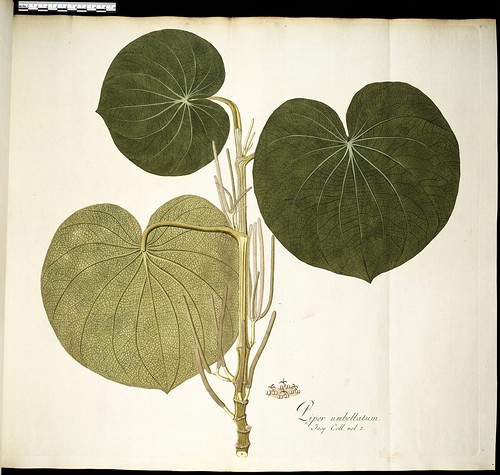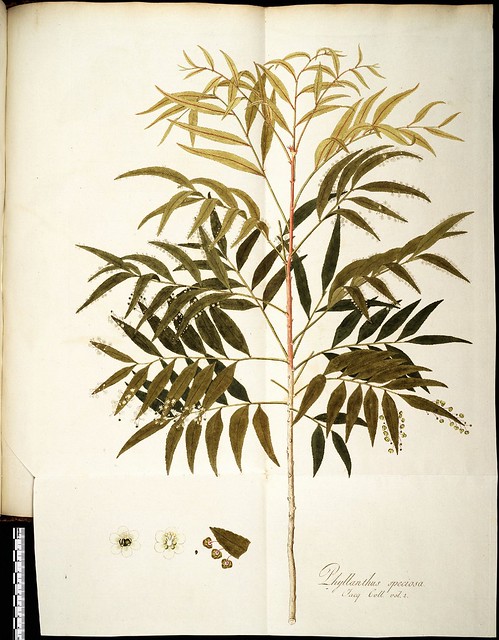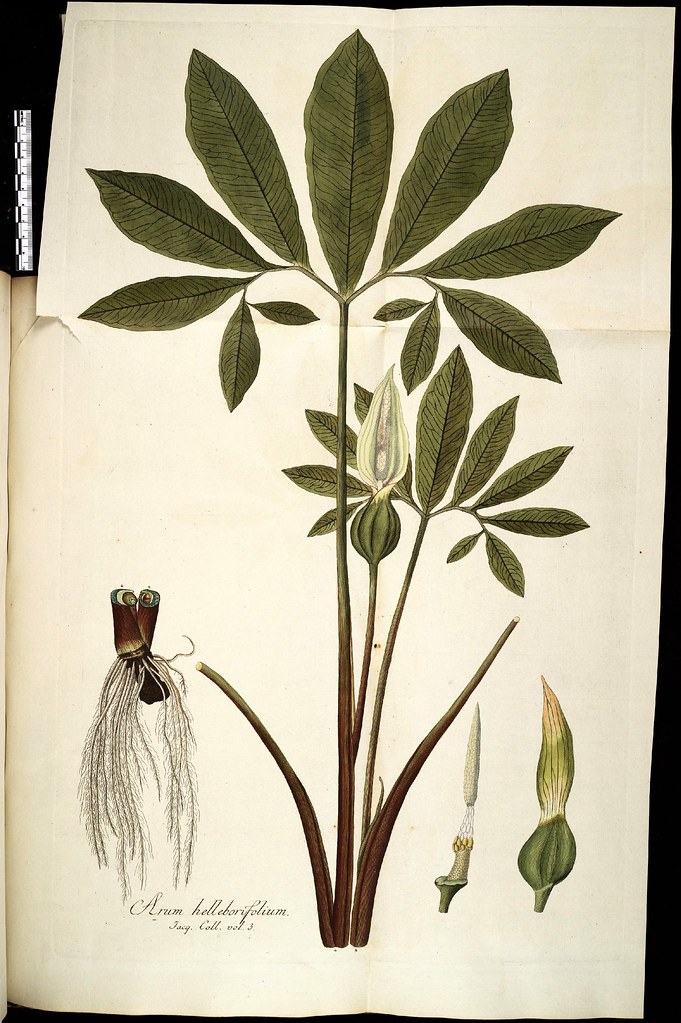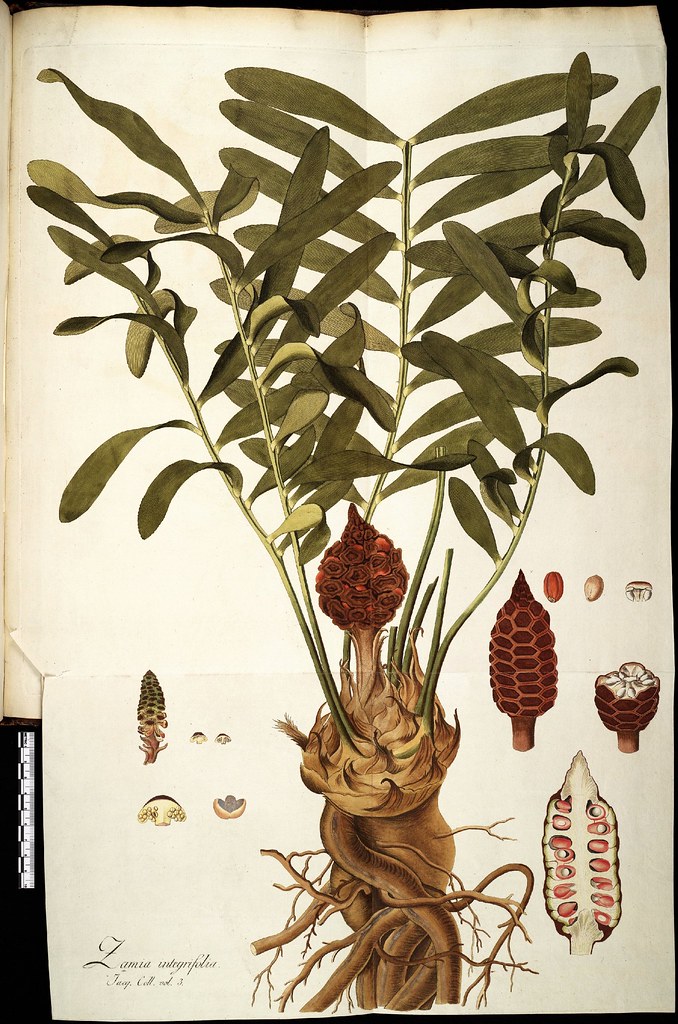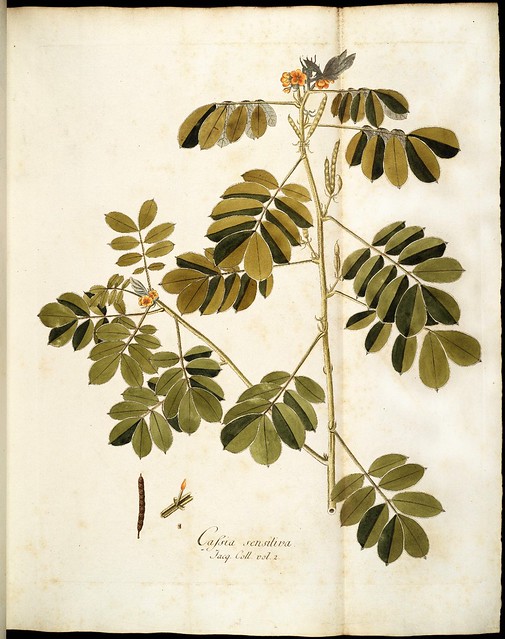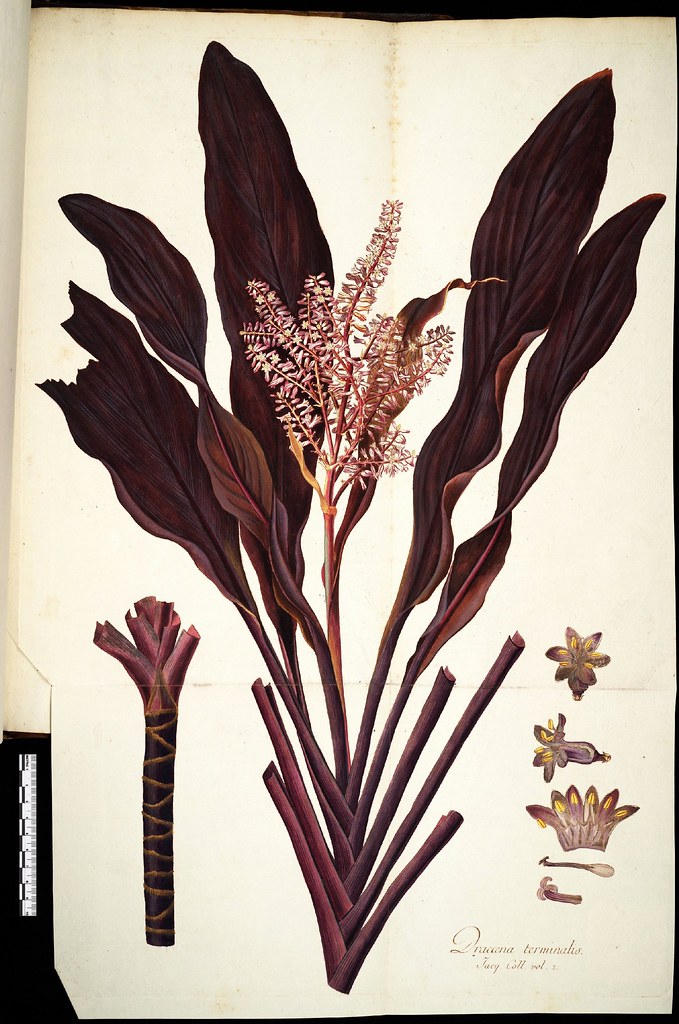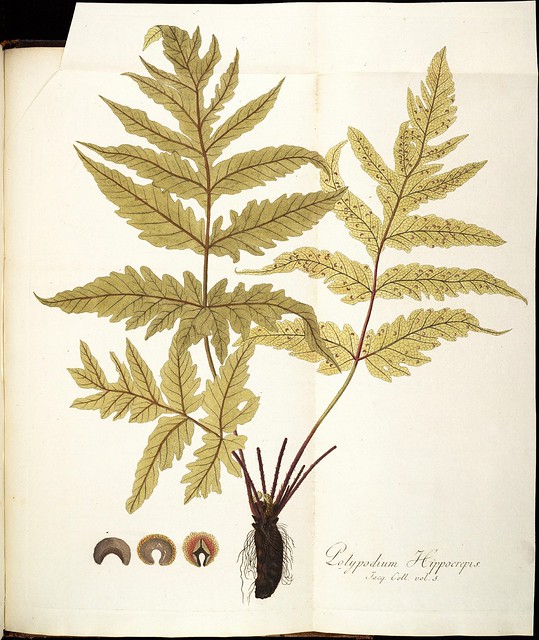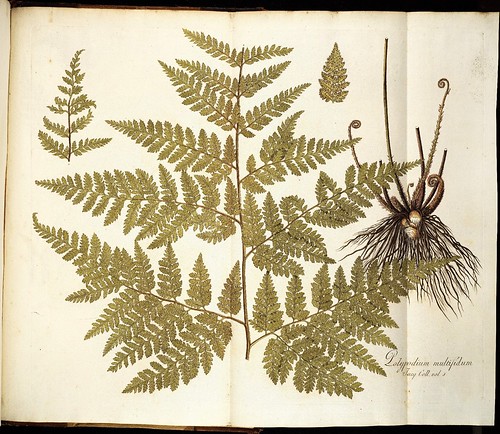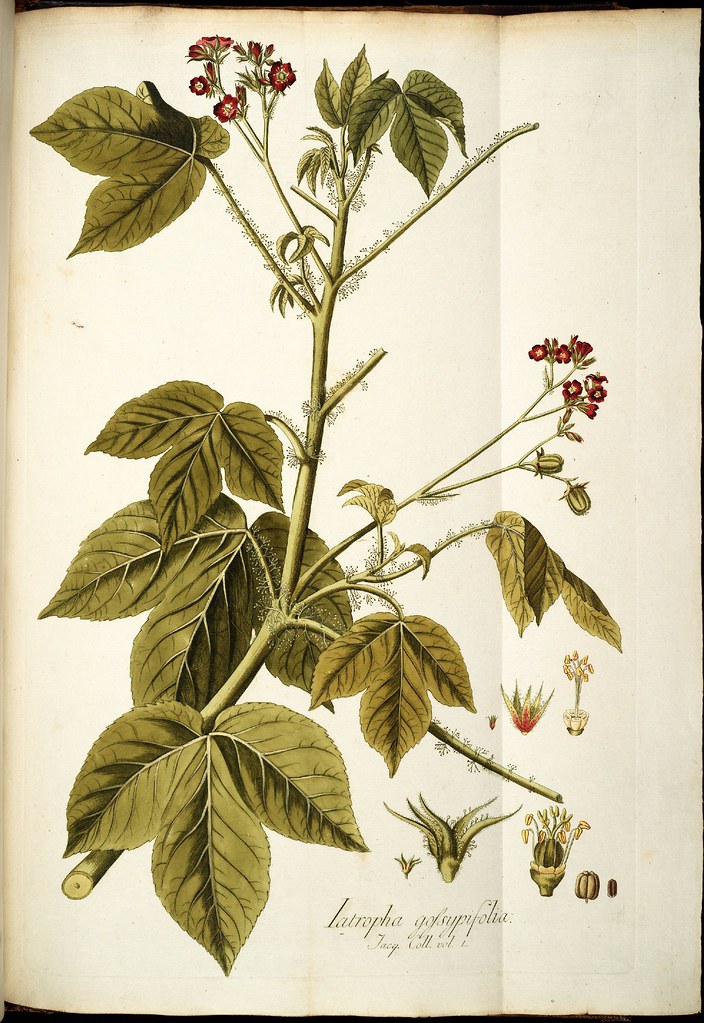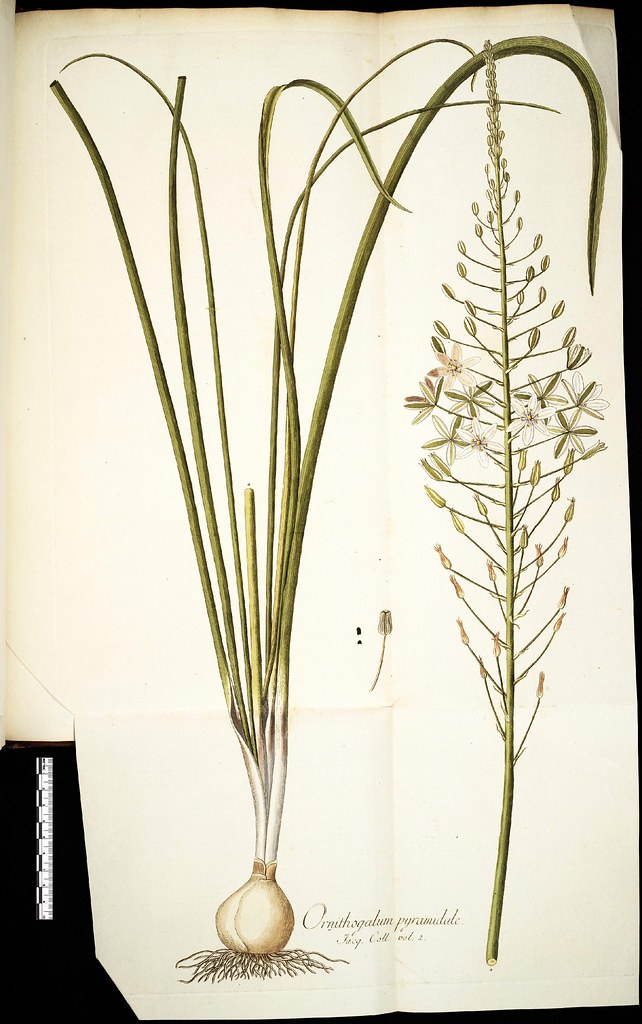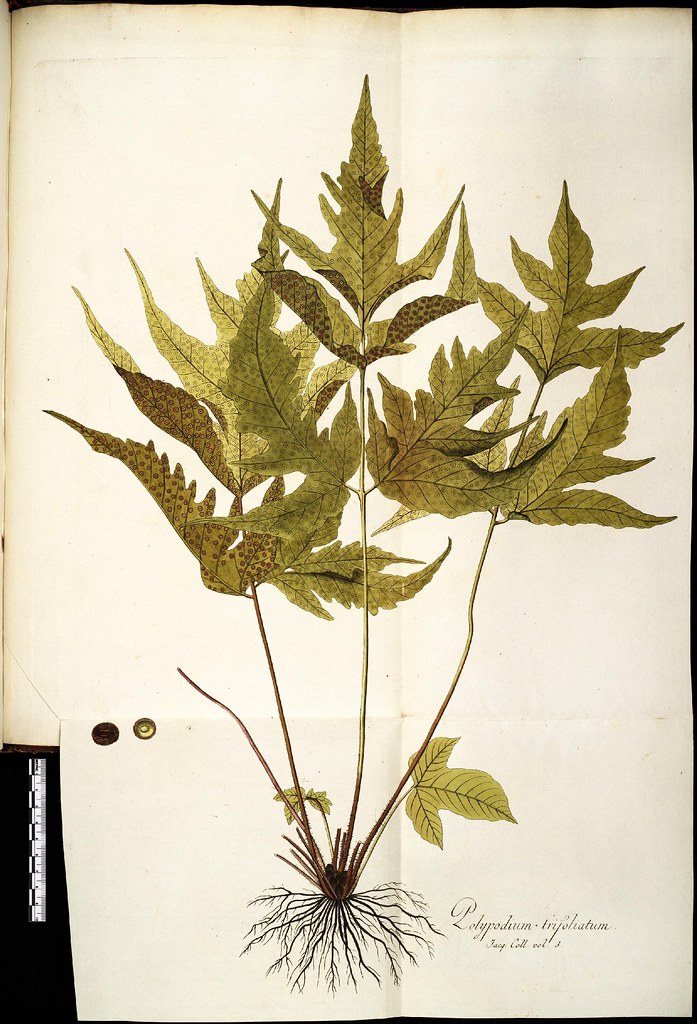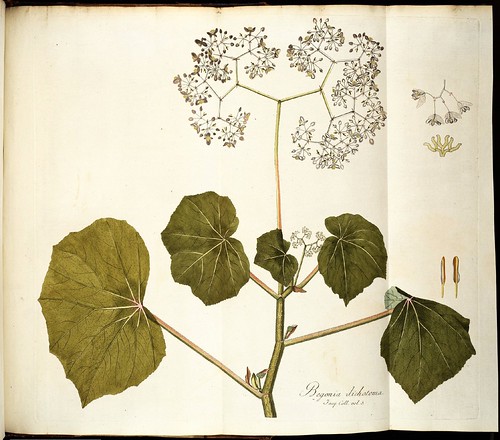"The [Holy Roman] Empire comprised a collection of diverse territories of varying size, importance and religious adherence, each ruled over by its own territorial overlord, who in turn owed allegiance to an elected Emperor.
In its basic form, the entry* was ceremonial in character, an event in which the ruler with his retinue entered officially into one of the cities of his realm and was received by the dignitaries of that city with a standard set of ceremonies of obeisance or of feudal contract.
The imperial entry had its origins in Roman, Byzantine and medieval ceremonial. Ancient ceremonial combined with classicising impermanent architecture, above all the triumphal arch, were its characteristics.
The Emperor Maximilian I (1459-1519, elected Emperor in 1508) commissioned two works of art which exerted a considerable influence on court festivals generally in the Empire: the set of 192 woodcuts commissioned from Dürer in 1515 which together make up the Triumphal Arch and the series of 136 woodcuts by Burgkmair, Altdorfer, Dürer and others which constitute the Triumphal Procession of 1517."
[Helen Watanabe-O'Kelly, 1999 via BL]
*or procession or triumph

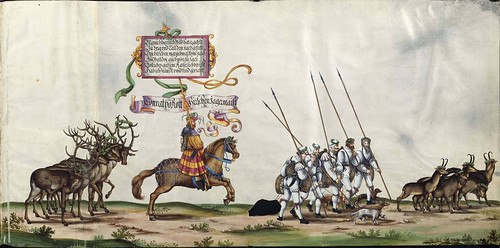


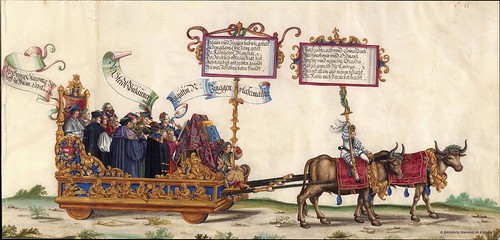
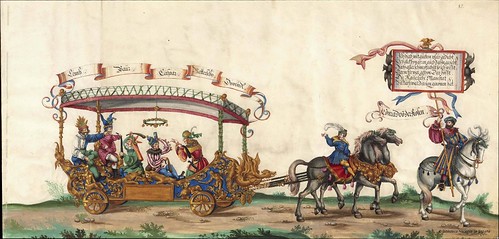
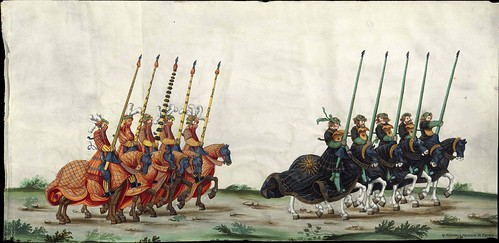
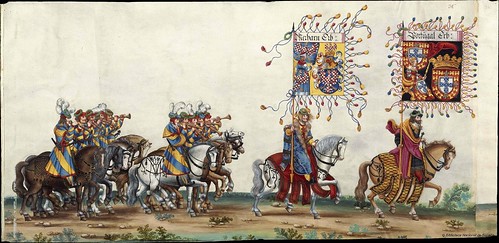
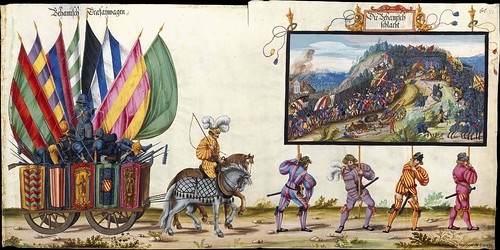
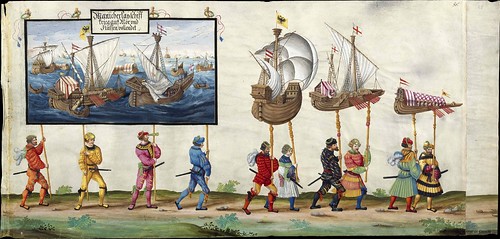

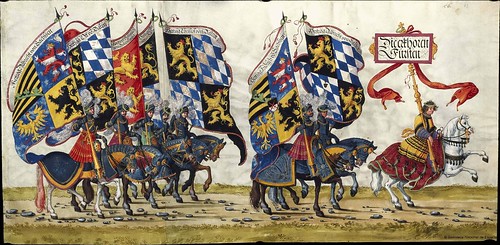
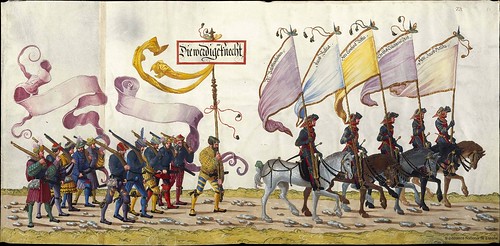
Click through to large and extra large versions :
even larger images are available from the source site, listed below.
[this is an original entry on BibliOdyssey]
even larger images are available from the source site, listed below.
[this is an original entry on BibliOdyssey]
"'Festival Book' is the term for accounts of festivities such as entries, of which there are many hundreds, often surviving in very few copies. Originally manuscripts, often illustrated, compiled for prince or city, with the arrival of print they were frequently published, varying in form from short pamphlets describing the order of events, and perhaps recording speeches, to lavish books illustrated with woodcuts or engravings showing the various tableaux, often including a fold-out panorama of the procession, curling to and fro across the page. [..]
These livrets are not always to be trusted as literal records; some were compiled beforehand from the plans, and others after the event from fading memories. The authors or artists engaged in producing the books had by no means always seen the entry themselves. Roy Strong finds that they are 'an idealization of an event, often quite distant from its reality as experienced by the average onlooker. One of the objects of such publications was to reinforce by means of word and image the central ideas that motivated those who conceived the programme.' [..]
The Holy Roman Emperor, Maximilian I, went a step further, creating enormous virtual triumphs that existed solely in the form of print. The Triumphs of Maximilian (begun in 1512 and unfinished at Maximilian's death in 1519) contains over 130 large woodcuts by Dürer and other artists, showing a huge procession (still in open country) culminating in the Emperor himself, mounted on a huge car."
The charming manuscript images seen above were sometimes assiduously copied from, and at other times simply inspired by, The Triumphs of Maximilian I. That the procession was itself imaginary makes the concept of embellishment more a stylistic contrast with the originals than in any sense a deviation from reality. The manuscript was produced in about 1700 (so it is claimed) and features captions in German. It may have been originally commissioned by the Hapsburg Archduke Albert of Austria (d. 1621) and ended up in Spain via his successors, Philip IV and Charles II. The manuscript artist is not known.
'Triunfo del Emperador Maximiliano I, Rey de Hungría, Dalmacia y Croacia, Archiduque de Austria' is owned by BNE and hosted by Biblioteca Digital Hispánica [homepage].
You'll notice that the direct link to the manuscript goes via the European Library. They are host to a(n) (new) exhibition section called Reading Europe: European Culture Through the Book, that makes a 1000 books from the national libraries of Europe available in bilingual or multilingual format.
- Previously: Burgkmair Tournament Book; Knights Tournament Book [and, and] & in general: Festival.
- British Library Festival Books.
- Triumph of Maxmilian I: 137 Woodcuts by Hans Burgkmair and Others (Dover).
- The University of Graz coloured woodcuts of the Triumph of Maximilian I *.

[alternative, or, I suppose, the original, from the Graz MS]
